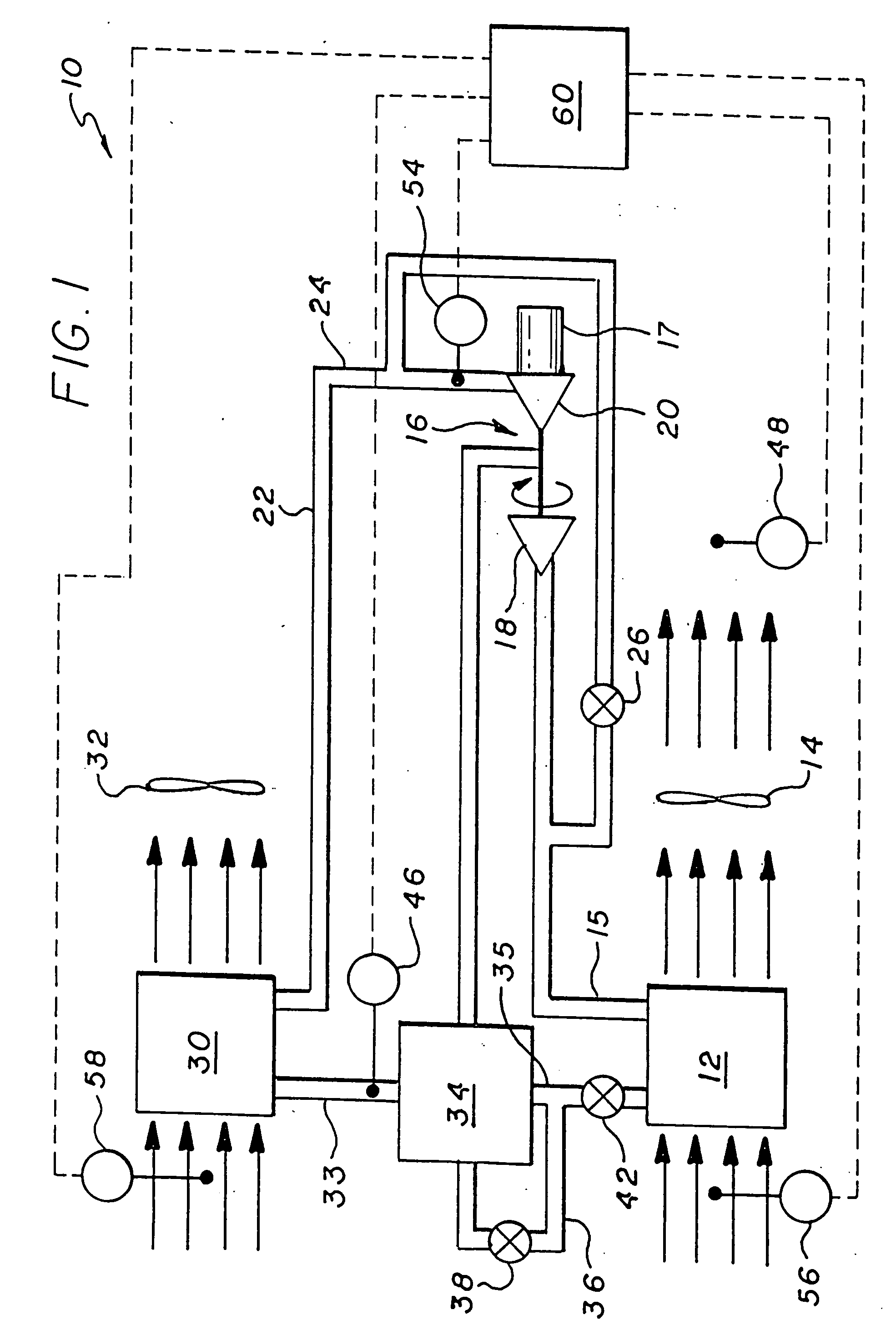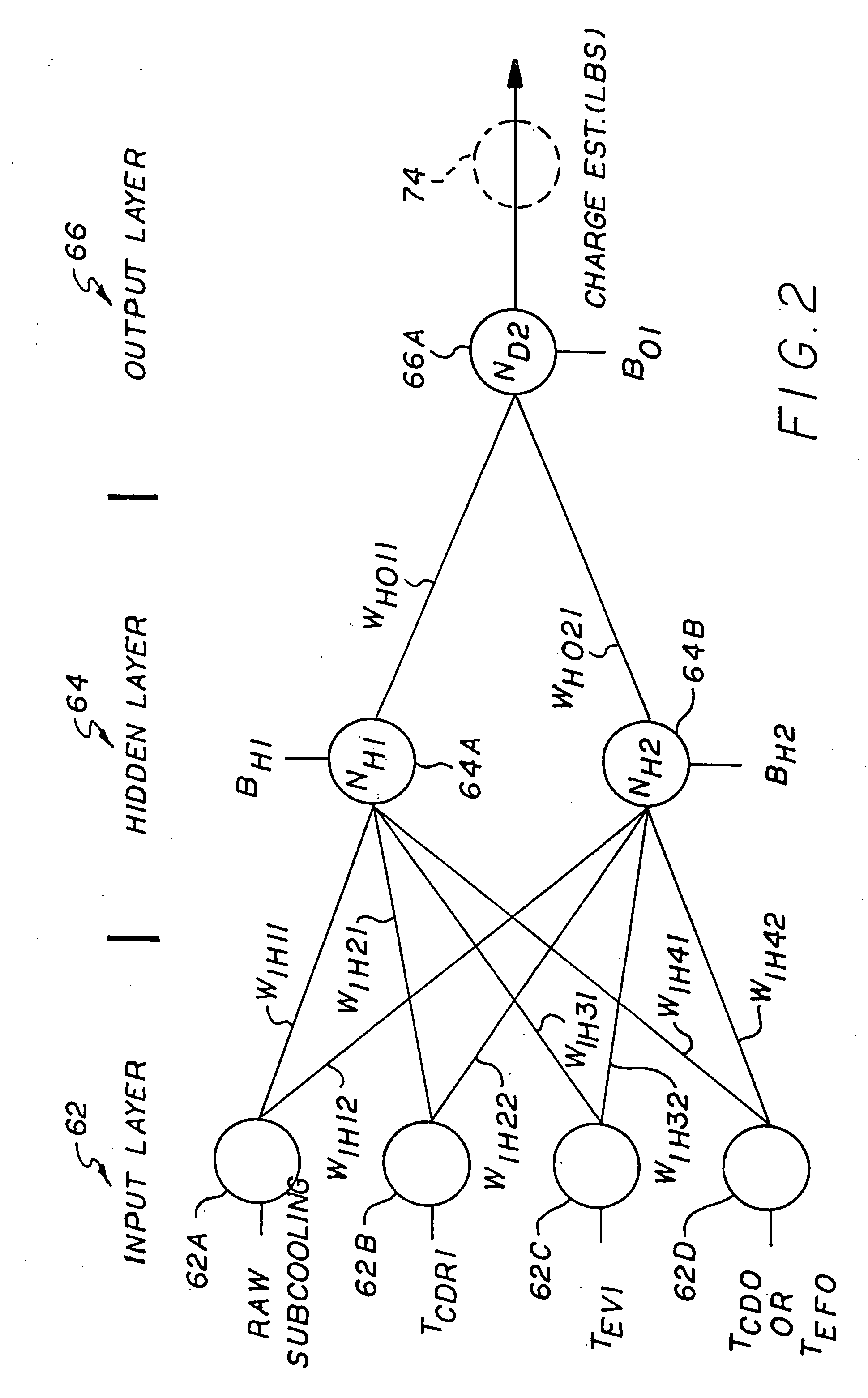Process for refrigerant charge level detection using a neural net having one output neuron
- Summary
- Abstract
- Description
- Claims
- Application Information
AI Technical Summary
Benefits of technology
Problems solved by technology
Method used
Image
Examples
Embodiment Construction
[0030] The vapor cycle system, illustrated in FIG. 1, is a modern, compact system design. Such systems are typically installed in an aircraft and are used for forced air cooling of avionic equipment. During conditions requiring maximum cooling, the refrigerant enters the evaporator 12 as a low temperature mixture of liquid and vapor. In this low pressure side of the refrigeration loop, the pressure remains essentially constant as the refrigerant flows through the evaporator. In the evaporator 12, the liquid portion of the refrigerant evaporates, absorbing heat from the air from the avionics compartment (not shown) pulled there through by the evaporator fan 14. The refrigerant exits the evaporator 12 in line 15 as a superheated vapor and flows to the compressor 16 driven by motor 17. The low pressure vapor enters the first stage 18 of the compressor 16, where it is compressed to a pressure midway between the first stage inlet pressure and second stage 20 discharge pressure.
[0031] Th...
PUM
 Login to View More
Login to View More Abstract
Description
Claims
Application Information
 Login to View More
Login to View More - Generate Ideas
- Intellectual Property
- Life Sciences
- Materials
- Tech Scout
- Unparalleled Data Quality
- Higher Quality Content
- 60% Fewer Hallucinations
Browse by: Latest US Patents, China's latest patents, Technical Efficacy Thesaurus, Application Domain, Technology Topic, Popular Technical Reports.
© 2025 PatSnap. All rights reserved.Legal|Privacy policy|Modern Slavery Act Transparency Statement|Sitemap|About US| Contact US: help@patsnap.com



